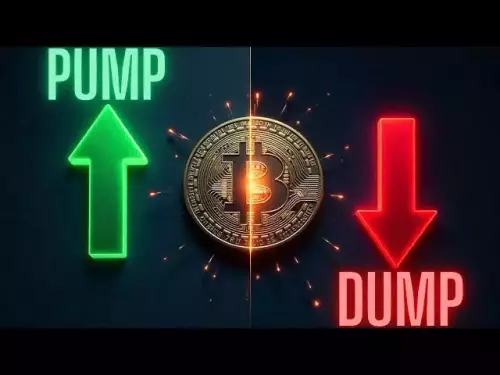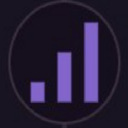-
 bitcoin
bitcoin $111145.080499 USD
0.75% -
 ethereum
ethereum $3928.989005 USD
1.66% -
 tether
tether $1.000226 USD
-0.02% -
 bnb
bnb $1108.209329 USD
-2.26% -
 xrp
xrp $2.545944 USD
6.36% -
 solana
solana $193.960655 USD
0.72% -
 usd-coin
usd-coin $1.000128 USD
0.02% -
 dogecoin
dogecoin $0.199304 USD
2.23% -
 tron
tron $0.297908 USD
-4.88% -
 cardano
cardano $0.656962 USD
2.13% -
 hyperliquid
hyperliquid $39.225782 USD
-1.92% -
 chainlink
chainlink $17.897108 USD
2.99% -
 ethena-usde
ethena-usde $0.999354 USD
-0.02% -
 stellar
stellar $0.321154 USD
3.36% -
 bitcoin-cash
bitcoin-cash $505.299839 USD
5.10%
How to read Jupiter (JUP) on-chain data? What is the significance of large transfers?
To analyze JUP on-chain data, use Solana Explorer, SolanaFM, and Dune Analytics to track transaction volume, active addresses, and large transfers for insights into market dynamics.
May 02, 2025 at 01:14 pm

Understanding how to read Jupiter (JUP) on-chain data is crucial for anyone interested in tracking the movement and behavior of this cryptocurrency. On-chain data provides valuable insights into the health, activity, and potential future movements of JUP. This article will guide you through the process of reading JUP on-chain data and explain the significance of large transfers.
Accessing Jupiter On-Chain Data
To start analyzing Jupiter on-chain data, you need to access reliable blockchain explorers and analytics platforms. Some popular options include:
- Solana Explorer - As Jupiter is built on the Solana blockchain, this is a primary source for on-chain data.
- SolanaFM - A comprehensive analytics platform for Solana-based tokens.
- Dune Analytics - A platform that allows for custom queries and dashboards.
To access JUP on-chain data on Solana Explorer:
- Visit the Solana Explorer website.
- Search for the Jupiter token address in the search bar.
- Navigate to the token's page to view detailed transaction history and other metrics.
Key Metrics to Monitor
When reading Jupiter on-chain data, several key metrics can provide insights into the token's activity and health. These include:
- Transaction Volume - This shows the total number of transactions involving JUP over a period. High transaction volumes often indicate increased activity and interest in the token.
- Active Addresses - The number of unique addresses interacting with JUP. A growing number of active addresses can signal increasing adoption and usage.
- Token Supply - Monitoring the circulating and total supply of JUP can help you understand inflation rates and token distribution.
- Exchange Flows - Tracking the flow of JUP to and from exchanges can provide insights into potential buying or selling pressure.
Analyzing Large Transfers
Large transfers of JUP can have significant implications for the token's price and market sentiment. Understanding these transfers requires attention to the following aspects:
- Size of the Transfer - The amount of JUP being transferred. Large transfers typically involve millions of tokens and can signal significant market moves.
- Source and Destination Addresses - Identifying whether the transfer is between wallets, from a wallet to an exchange, or vice versa. Transfers to exchanges might indicate potential selling pressure, while transfers from exchanges to wallets could suggest accumulation.
- Frequency of Large Transfers - The regularity of large transfers can indicate the activity level of whales or institutional investors. Frequent large transfers may signal ongoing market manipulation or strategic positioning.
Using Blockchain Analytics Tools
To delve deeper into large transfers and other on-chain activities, you can use blockchain analytics tools. These tools provide more granular data and visualizations to help you interpret the data effectively. Here's how to use Dune Analytics for JUP on-chain data:
- Create an account on Dune Analytics if you don't already have one.
- Navigate to the query editor and search for existing JUP queries or create a new one.
- Write a SQL query to extract data about large transfers. For example, you might write:
SELECT block_time, from_address, to_address, amountFROM solana.transactionsWHERE token_address = 'JUP_TOKEN_ADDRESS' AND amount > 1000000 -- Adjust the amount to filter for large transfersORDER BY block_time DESC;- Run the query to get a list of large JUP transfers, then analyze the results to understand the patterns and implications.
Significance of Large Transfers
Large transfers of JUP can have several implications for the token's market dynamics:
- Market Sentiment - Large transfers to exchanges can create a bearish sentiment, as it may suggest that holders are preparing to sell their tokens. Conversely, large transfers from exchanges to wallets can be bullish, indicating accumulation by investors.
- Price Impact - Significant transfers can lead to immediate price movements. Large sales can cause price drops, while large purchases can drive prices up.
- Whale Activity - Large transfers often indicate the actions of whales or institutional investors. Tracking these can help you understand the influence of major players on the market.
- Liquidity Shifts - Large transfers can affect the liquidity of JUP on exchanges, potentially leading to increased volatility.
Interpreting On-Chain Data for Decision-Making
When using on-chain data to make investment decisions, consider the following:
- Contextual Analysis - Always consider the broader market context when interpreting large transfers. Market trends, news events, and overall sentiment can influence the impact of these transfers.
- Correlation with Price - Analyze how large transfers correlate with price movements. Historical data can help you identify patterns and predict potential future movements.
- Diversification of Data Sources - Rely on multiple data sources and tools to cross-verify information. Combining data from different platforms can provide a more comprehensive view of JUP's on-chain activities.
FAQs
Q: Can on-chain data predict future price movements of JUP?A: On-chain data can provide insights into potential price movements, but it cannot predict the future with certainty. It's essential to use on-chain data as one of many tools in your analysis toolkit and to consider other market factors.
Q: How often should I check JUP on-chain data?A: The frequency of checking JUP on-chain data depends on your investment strategy. For short-term traders, daily or even hourly checks might be necessary, while long-term investors might check weekly or monthly.
Q: Are there any risks associated with relying solely on on-chain data for investment decisions?A: Yes, relying solely on on-chain data can be risky. It's important to consider other factors such as market news, technical analysis, and fundamental analysis to make well-rounded investment decisions.
Q: Can I use on-chain data to identify potential scams or fraudulent activities involving JUP?A: Yes, on-chain data can help identify unusual patterns that might indicate fraudulent activities. However, it's crucial to combine this with other investigative methods to confirm any suspicions.
Disclaimer:info@kdj.com
The information provided is not trading advice. kdj.com does not assume any responsibility for any investments made based on the information provided in this article. Cryptocurrencies are highly volatile and it is highly recommended that you invest with caution after thorough research!
If you believe that the content used on this website infringes your copyright, please contact us immediately (info@kdj.com) and we will delete it promptly.
- Essex Post Office, 5p Coins, and King Charles: A Royal Mint Revelation!
- 2025-10-23 10:30:16
- Waymo's Newark Airport AV Tests: Alphabet's AI Gamble Pays Off?
- 2025-10-23 10:30:16
- King Charles 5p Coins: A Royal Flush in Your Pocket?
- 2025-10-23 10:35:18
- Solana, Crypto Advisory, and Forward Industries: A New York Minute on the Future of Finance
- 2025-10-23 08:51:22
- MAGACOIN: Ethereum Whales Dive into the Hottest Presale of 2025
- 2025-10-23 08:51:22
- Kadena's End of the Road? KDA Token Plummets Amid Project Abandonment
- 2025-10-23 08:55:34
Related knowledge

A Simple Strategy for Scalping Ethereum (ETH) on the 5-Minute Chart
Oct 25,2025 at 01:54pm
A Simple Strategy for Scalping Ethereum (ETH) on the 5-Minute Chart This strategy focuses on short-term price movements of Ethereum using a 5-minute t...

How to Reduce Liquidation Risk on a High-Leverage BNB Position?
Oct 25,2025 at 05:36pm
Understanding Liquidation Mechanics in High-Leverage BNB Trading1. Liquidation occurs when the value of a leveraged position drops to a level where th...

Practical parameter settings for a Bitcoin multi-timeframe moving average system
Sep 18,2025 at 10:54pm
Optimizing Timeframe Combinations for Bitcoin Trading1. Selecting appropriate timeframes is crucial when building a multi-timeframe moving average sys...

How can I filter out false breakouts in Dogecoin high-frequency trading?
Sep 22,2025 at 01:00am
Understanding False Breakouts in Dogecoin Trading1. A false breakout occurs when Dogecoin's price appears to move beyond a defined support or resistan...

Techniques for identifying tops and bottoms in the Bitcoin on-chain NVT model
Sep 20,2025 at 07:54pm
Understanding the NVT Model in Bitcoin Analysis1. The Network Value to Transactions (NVT) ratio is often described as the 'P/E ratio' of the cryptocur...

What does the surge in open interest in Bitcoincoin futures mean?
Sep 20,2025 at 11:18pm
Understanding the Surge in Dogecoin Futures Open Interest1. A surge in open interest within Dogecoin futures indicates a growing number of active cont...

A Simple Strategy for Scalping Ethereum (ETH) on the 5-Minute Chart
Oct 25,2025 at 01:54pm
A Simple Strategy for Scalping Ethereum (ETH) on the 5-Minute Chart This strategy focuses on short-term price movements of Ethereum using a 5-minute t...

How to Reduce Liquidation Risk on a High-Leverage BNB Position?
Oct 25,2025 at 05:36pm
Understanding Liquidation Mechanics in High-Leverage BNB Trading1. Liquidation occurs when the value of a leveraged position drops to a level where th...

Practical parameter settings for a Bitcoin multi-timeframe moving average system
Sep 18,2025 at 10:54pm
Optimizing Timeframe Combinations for Bitcoin Trading1. Selecting appropriate timeframes is crucial when building a multi-timeframe moving average sys...

How can I filter out false breakouts in Dogecoin high-frequency trading?
Sep 22,2025 at 01:00am
Understanding False Breakouts in Dogecoin Trading1. A false breakout occurs when Dogecoin's price appears to move beyond a defined support or resistan...

Techniques for identifying tops and bottoms in the Bitcoin on-chain NVT model
Sep 20,2025 at 07:54pm
Understanding the NVT Model in Bitcoin Analysis1. The Network Value to Transactions (NVT) ratio is often described as the 'P/E ratio' of the cryptocur...

What does the surge in open interest in Bitcoincoin futures mean?
Sep 20,2025 at 11:18pm
Understanding the Surge in Dogecoin Futures Open Interest1. A surge in open interest within Dogecoin futures indicates a growing number of active cont...
See all articles










































































